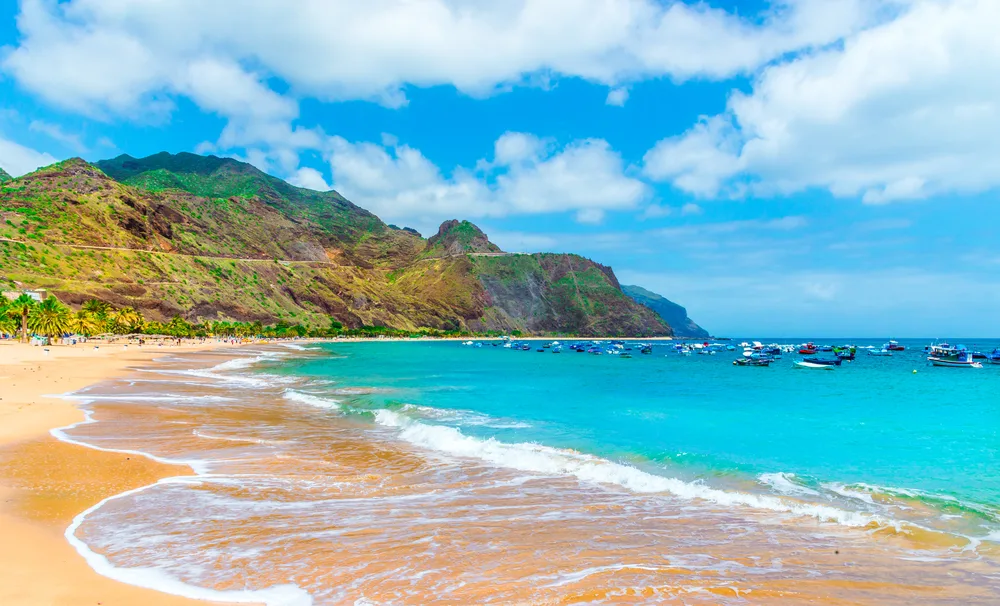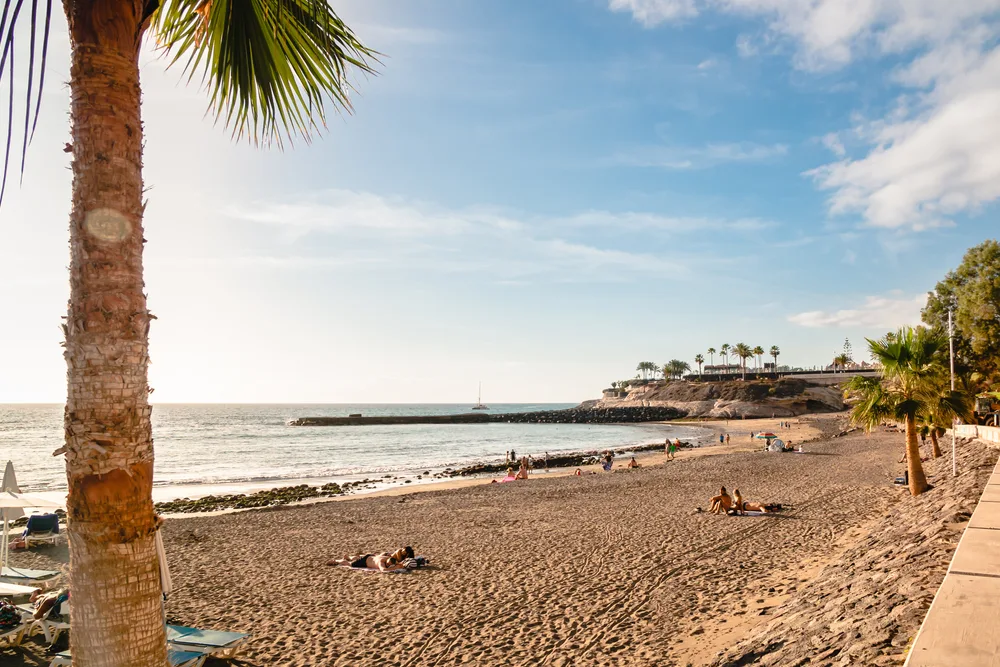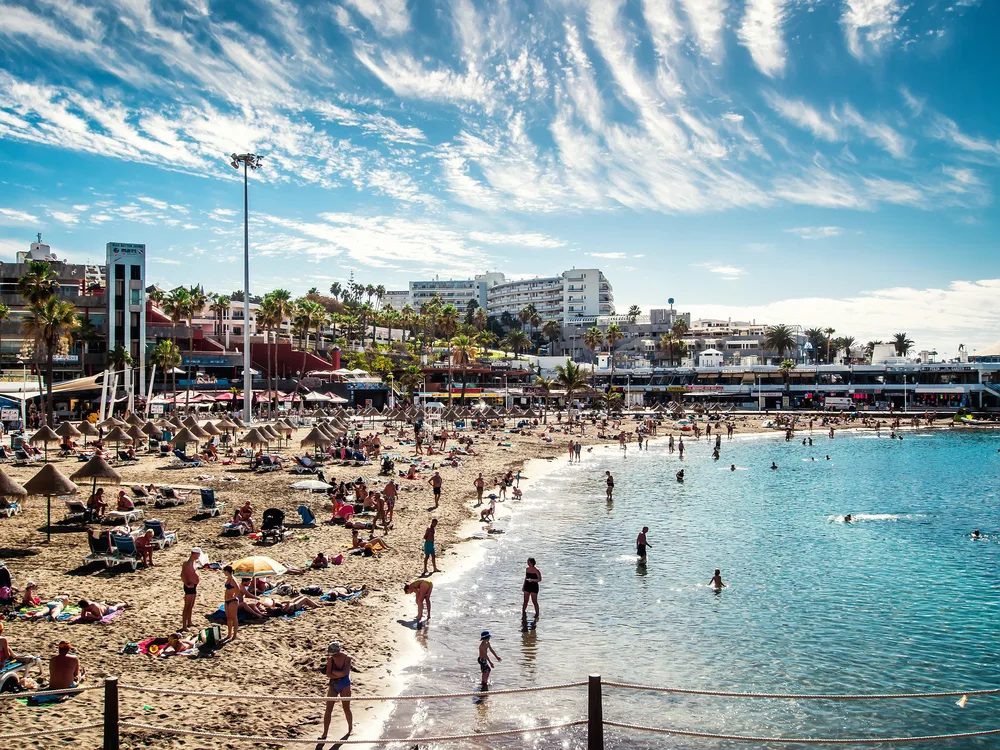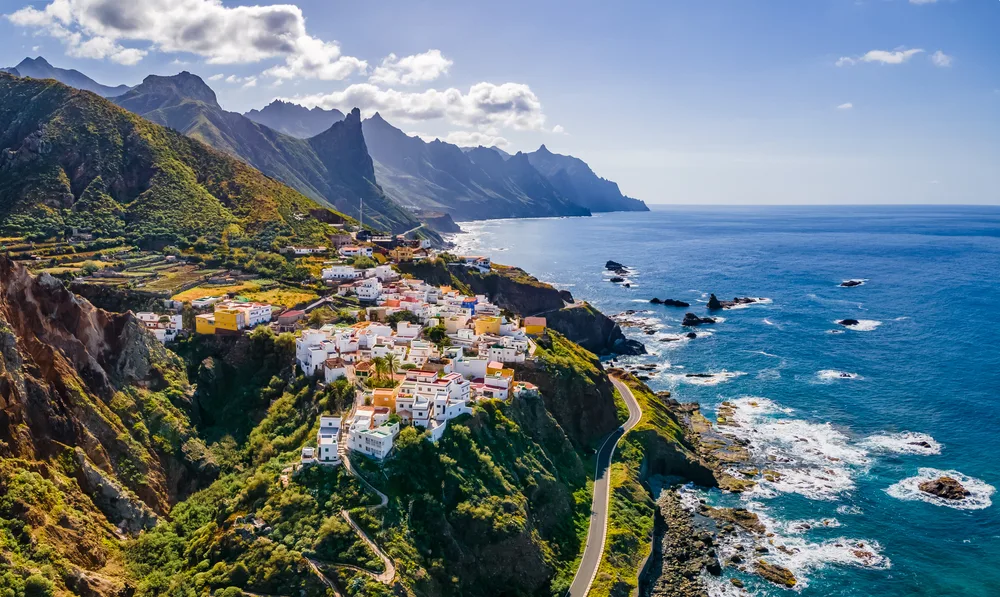What's the best time to visit the Canary Islands?
The best times to visit the Canary Islands are in spring and fall, offering warm weather around 75°F to 82°F and fewer tourists. These seasons are perfect for beach outings and exploring natural wonders, complemented by local festivals like Semana Santa and Fiesta de San Andres.
For a more festive atmosphere, winter is popular for its lively events, including the Santa Cruz de Tenerife Carnival, attracting visitors with its mild, yet cooler, weather.
The Canary Islands, a Spanish archipelago actually located closer to Africa, are a popular destination for visitors in search of sun and fun. The unique landscapes of the Canary Islands, shaped by volcanic activity, include the UNESCO geopark of Lanzarote, the sandy Parque National del Corralejo, and still-active volcanoes.
You can spend your vacation hiking the many varied landscapes, or just lounging on the beach and enjoying swimming and surfing. The quaint towns and villages as well as the many wineries are also worth exploring.
Thanks to their beautiful nature, pristine beaches, and otherworldly charm, the Canary Islands are one of Spain’s most popular destinations. Keep reading to learn when is the best time to visit to spend time on the beach, beat the crowds, and more.
Overall Best Time to Visit the Canary Islands

Serenity-H/Shutterstock
The best time to visit the Canary Islands is during the shoulder seasons of spring and fall, when you can make the most of the island thanks to mild temperatures and fewer crowds.
The Canary Islands have a hot desert or semi-desert climate throughout most of the archipelago. Keep in mind that although this group of islands belongs to Spain, it is actually closer to the African coast than to Europe.
Its climate is more influenced by the Sahara than by continental Europe, so keep that in mind when booking your trip. Average high temperatures in the spring and fall are warm but not too hot.
According to the UK Met Office, April and May see average temperatures of 75 degrees Fahrenheit (24 degrees Celsius). Fall is slightly warmer. September average high temperatures are about 82 degrees Fahrenheit (28 degrees Celsius) while October has an average temperature of a balmy 78 degrees Fahrenheit (26 degrees Celsius).
These temperatures are the sweet spot for exploring the Canary Islands. The weather is warm enough for swimming and sunbathing on the beach. Spend your time exploring the beautiful beaches such as Papagayo Beach on Lanzarote.
Although it is warm enough to lay on the beach, it isn’t too hot that you can’t do anything else. The Canary Islands have such beautiful landscapes, well-preserved in natural parks and even UNESCO-protected sites, that it would be a shame to just stick to the beach.
Use the mild spring and fall weather to go hiking in the La Gomera cloud forest and other spectacular places. Spring and fall are more laid-back than the high season on the island, but there is still plenty going on.
Most festivals tend to be religious festivals that show off the local culture, such as Semana Santa in the spring. The Fiesta de San Andres in Tenerife is an interesting local festival that celebrates a local saint but also the wine harvest, and is a great time to see local customs on display.
On the other hand, if all that you want is a warm and fun getaway, then winter is a good time to visit the Canary Islands. Many people visit in the winter because although the weather isn’t warm enough for tanning, it is still warmer than in other parts of Europe.
People from Northern Europe flock to the beach to escape winter at home. Between December and February is one of the best times to visit for parties and festivals. In February, Santa Cruz de Tenerife hosts one of the largest Carnivals outside of Brazil.
There are also music festivals and other events throughout the season. It does get crowded, but if your main goal when visiting is to experience the nightlife, winter is the best season to do so.
Cheapest Time to Visit the Canary Islands

Smspsy/Shutterstock
The cheapest times to visit the Canary Islands are the shoulder seasons in spring and fall. The Canary Islands actually have two high seasons. The beaches get crowded in the winter, when many visitors from Europe flock to the archipelago in search of warmer temperatures.
Summer brings even more crowds as families and young people flock to the beaches and nightclubs. The crowds increase the prices accordingly. To save money on visiting the Canary Islands, you want to avoid either of the high seasons.
The months of April, May, October, and November are in the sweet spot between, creating the two shoulder seasons for the archipelago. Since guests are less frequent during this time, many hotels lower their rates during the spring and fall.
Although the Canary Islands’ popularity with tourists throughout most of the year means that hotels are under less pressure to offer discounts, you can still find rooms for 15-20% less during the shoulder season than during the peak.
Flying to the Canary Islands also costs less during the shoulder season. In the spring, you just have to be mindful of avoiding the Easter holidays as many people go on vacation during this time, increasing the price of flights. You can get the best deals on flights in the late fall months of October and November.
Least Busy Time to Visit the Canary Islands

Aleksandar Todorovic/Shutterstock
The least busy time to visit the Canary Islands is during the spring and fall shoulder seasons, meaning that you’ll have many popular attractions to yourself.
The beauty of visiting the Canary Islands when there are fewer crowds around is that you can have a truly relaxing vacation. You can lounge on the beach and only hear the sounds of the waves, not the sounds of other people’s speakers or voices.
Plus, it’s a lot easier to find a place to lay your towel. Water temperatures are warmer in the fall than in the spring thanks to summer’s residual heat. The lack of crowds means that you’ll find it easier to appreciate nature.
Whales and dolphins migrate around the islands in the spring and fall, making this season perfect for whale-watching excursions. In the spring, the mountains are in bloom with wildflowers, creating one of the best backdrops for hiking.
Worst Time to Visit the Canary Islands

Tenerife, Canary Islands- December 20, 2014: Crowd of people swimming and sunbathing on the Colon beach/Alex Tihonovs/Shutterstock
The worst time to visit the Canary Islands is the summer, when the crowds and the heat combine to make a normally pleasant vacation destination difficult to enjoy.
When planning your trip, you shouldn’t underestimate the heat of the Canary Islands. Temperatures can reach the high 80s on the Fahrenheit scale in July and August. There is very little rain, meaning that the sun gets baked into everything.
Occasionally, hot winds blow in from the Sahara, bringing dust and even more heat. The heat makes it dangerous to go hiking or enjoy outdoor activities during the day without getting heatstroke, and even lounging on the beach could earn you a sunburn.
Summer may be the worst time weather-wise to visit the Canary Islands, but it is the most popular time for visitors. Its popularity is also why summer is the worst time to visit.
The islands become very crowded, and popular resorts fill up quickly. Sometimes, it may feel impossible to find a place to lay your towel. The quaint towns become flooded with people.
If you have to visit in the summer because you have limited time off, it’s still worth visiting this unique destination. Just visit one of the less popular islands, plan hikes for early in the morning, and be sure to leave your resort.
Frequently Asked Questions

Serenity-H/Shutterstock
Here are some of the most common questions people have also asked about visiting the Canary Islands:
What is the best month to go to the Canary Islands?
The best months to go to the Canary Islands are June or September, when temperatures are warm but the worst of the crowds are gone.
Which Canary Island has the best weather?
All of the Canary Islands have beautiful, warm weather, but Tenerife tends to get the most sun throughout the year.
What's the cheapest month to go to the Canary Islands?
The shoulder season months of March, April, early May, October, and November are the least expensive times to visit.
Do the Canary Islands have a rainy season?
There is no rainy season per se in the Canary Islands, but the islands do get the most rain in the winter months of January and February.
Are the Canary Islands warm all year?
Although winter may not bring swimming temperatures, the Canary Islands are warm and mild all year round.
So, What’s the Best Time to Visit the Canary Islands?
For the best weather and the best deals, visit the Canary Islands during the shoulder seasons of spring and fall, when you can also beat the crowds.



